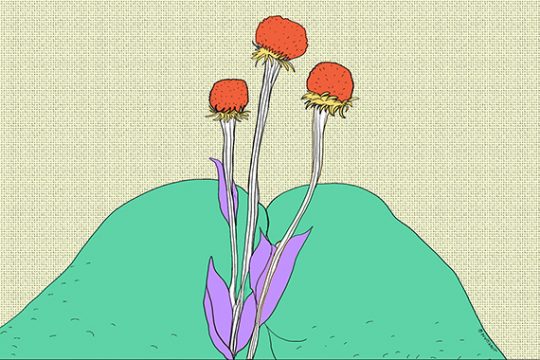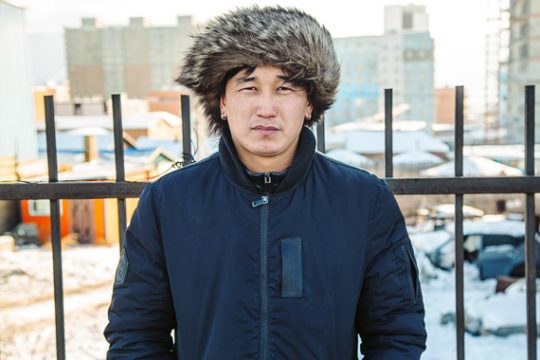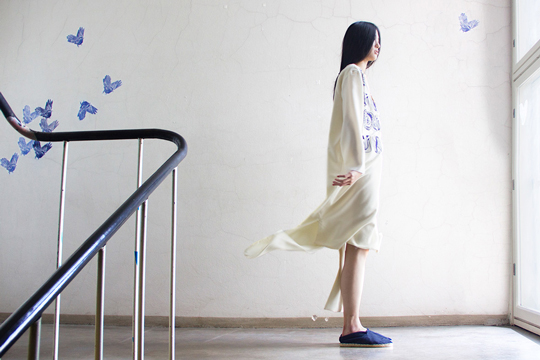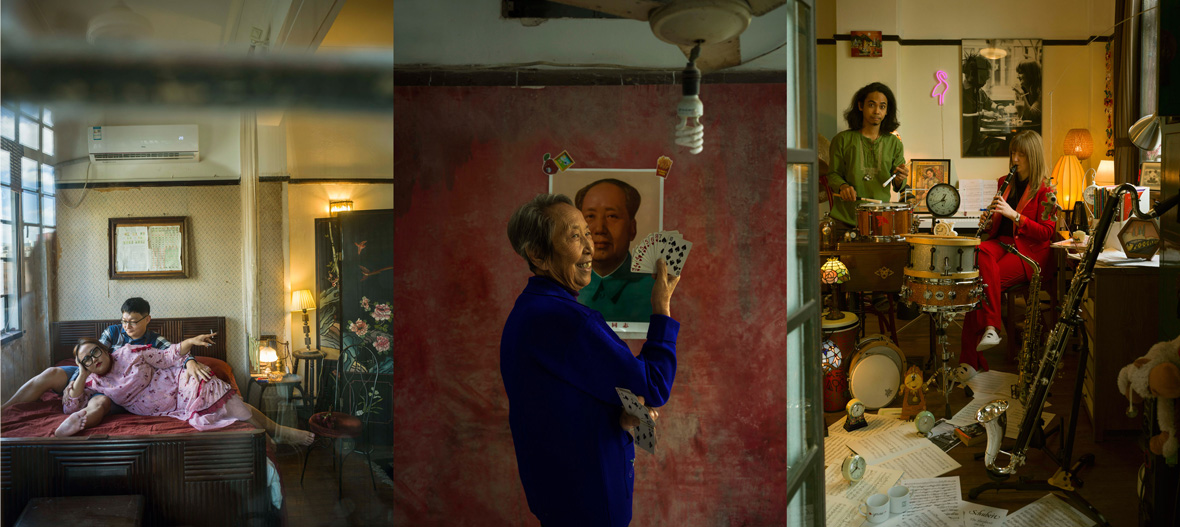
Situated on North Suzhou Road, a stone’s throw away from where the Suzhou River meets the Huangpu River, an aging building sits along the creekside. To the uninitiated, its drab exterior may seem far from inspiring, but for those privy to its history, there’s a lot to be appreciated.
This is the Embankment Building, also known as the Hebin Building. It finished construction in 1932 and boasted 282 rooms across eight floors. With nine elevators and a swimming pool on the ground floor of the building, it was—at the time of its completion—Shanghai’s largest residential building and the epitome of architectural decadence. In the late 70s, three additional floors were added to accommodate more residents.
Today, it’s become a city-level protected building. Originally built and owned by the Sassoons, a Baghdadi-Jewish family, the Embankment Building sheltered Jewish refugees who escaped to Shanghai during World War II. In the 1940s, it housed the China offices of United Artists, an American production company founded by Charlie Chaplin and other Western movie stars. Around the same period of time, the address also served as the China headquarters of the international relief agency UNRRA.
With its winding history and riverside location, the building has attracted artists and creative types from around the world. Today, the building’s popularity with creatives hasn’t waned. One of them is Ye Zile, a photographer who’s recently completed a photo series of the building’s residents. “The Hebin Building isn’t just an ordinary apartment,” he says. “Throughout Shanghai’s history, it’s played an important role in the city’s development. Its history makes it absolutely fascinating.”
在上海外白渡桥以西,苏州河和黄浦江交汇的北苏州路上,一排老旧的美式公寓住宅坐落于此。面朝外滩现代化摩天矩阵,这栋由石绵砖筑成的公寓或许稍显陈旧,而在它刚刚落成的 1932 年,高 8 层,282 套房间,9 部电梯,以及大楼底层的泳池,让它在当时格外令人瞩目,是那时候上海最大的单体公寓大楼。1978 年,为解决居民住房问题,政府又为滨河大楼加盖 3 层,造就了现在 11 层高的样子。
河滨大楼拥有传奇的过往。仅是三十年代,这里就曾是世界黑暗时期犹太难民来沪避难的第一落脚点、是英美电影公司的办事处、联合国善后救济总署的中国总部……不平凡的烙印又在之后屡见不鲜,很多人称它为“河畔会客厅”、是全球化背景下近现代上海的一道缩影。后来,其与上海大厦、上海邮政大楼、浦江饭店共同成为老上海北外滩的明信片,又被列入上海市第二批优秀历史建筑,成为当代游客、网红打卡胜地。
近九十年历史与人文的雕刻,河滨大楼(Embankment Building,简称为 E.B.)吸引着海内外文化名人、行业精英的聚集,影视、文学著作的青睐。上世纪五十年代,上海市政府接管该地,大楼居住群体得以洗牌与重建,文艺界人士、南下干部和统战对象,在住房分配中获得照顾,逐渐取代了外侨。而大楼现在的故事,仍被那里的住户延续,年轻的摄影师叶子乐就是其中一员。他说道:“河滨大楼并不只是一栋住宅,在上海近现代发展的每一阶段它都承载着一个非常重要的角色,它的迷人之处就在于它是历史本身。”
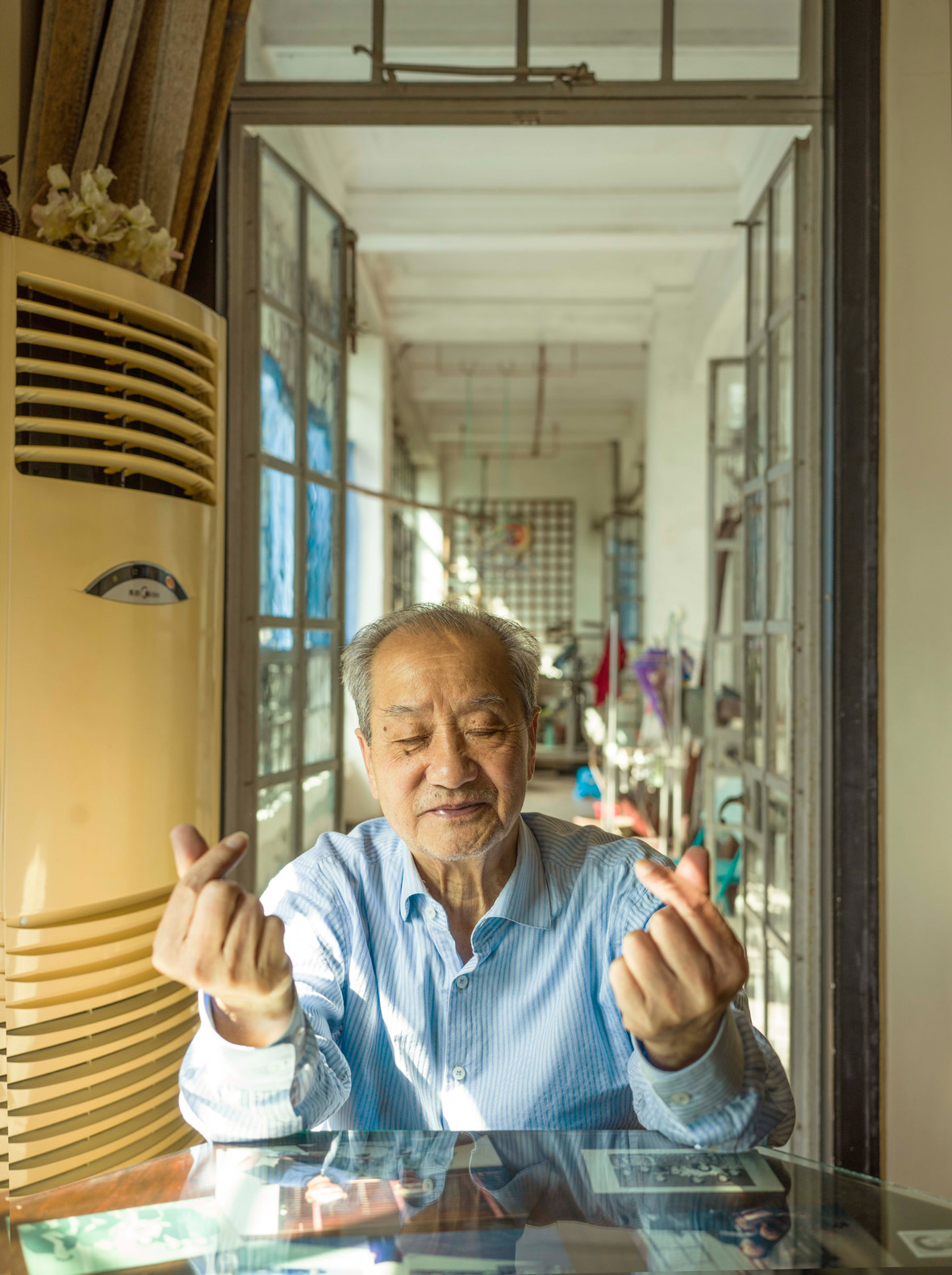
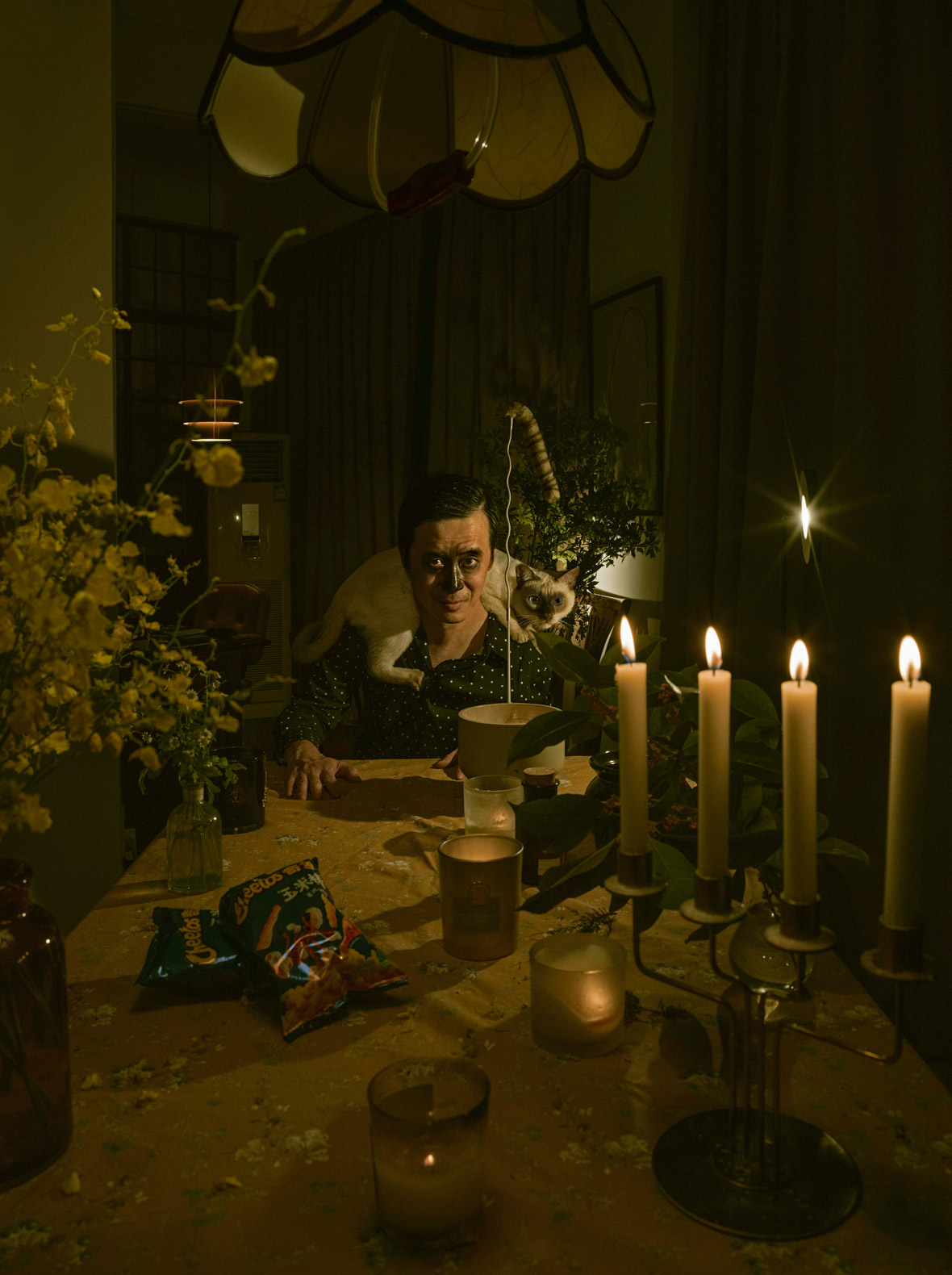
Ye is a Shanghai native who grew up in Hongkou District, where the building is located. But his appreciation of the landmark didn’t come about until much later in his life. “In 2010, I was there quite often,” he recalls. “My friend lived in the building and threw a lot of parties, but even then, my impression of it at the time was just that it was old, a place with shoddy infrastructure. I can’t say that I liked it.” After spending time overseas, this would change.
A decade later, the Shanghai government funded a billion RMB towards the building’s preservation and renovation, hoping to return it to the glory of its golden years. The exterior, its shared kitchens, elevators, and piping systems were all renovated. Despite all the changes, the spirit of old Shanghai can still very much be felt—in the spiral staircases, vintage mailboxes, and art-deco designs. Much of the interior still embodies the essence of haipai, a culture originating from Shanghai in the 20th and 21st centuries—it can be best described as the embrace of both traditional Chinese and Western aesthetics. Ye’s curiosity and appreciation of the building have only grown, and in 2021, he pooled his life savings, purchased an apartment unit, and moved in.
叶子乐是土生土长的上海人,打小住在虹口。但小时候的他却一直对这栋毗邻的、所谓的传奇公寓,提不起什么特别的兴致,他说道:“2010 年那会儿我经常去河滨大楼的朋友家里派对,当时对河滨大楼的印象是陈旧的、破败的,谈不上喜欢。”
十年后,为了还原曾经“远东第一豪宅”的历史风貌,上海政府耗费近一亿元人民币巨资开启了河滨大楼的保护修缮工程,对建筑外立面、窗户、公用厨卫设施、给排水及其设备、电梯间等基础设施进行全面的修复和改造,使大楼重拾昔日的风采。2021 年,从英国留学归来的叶子乐买下了河滨大楼里的一套公寓,卷入了大楼的历史洪潮,而被问道把房子买在这里的原因,他认为一部分是出于其传奇的过往,另外一部分则出自一位海归对老上海的遐恋。
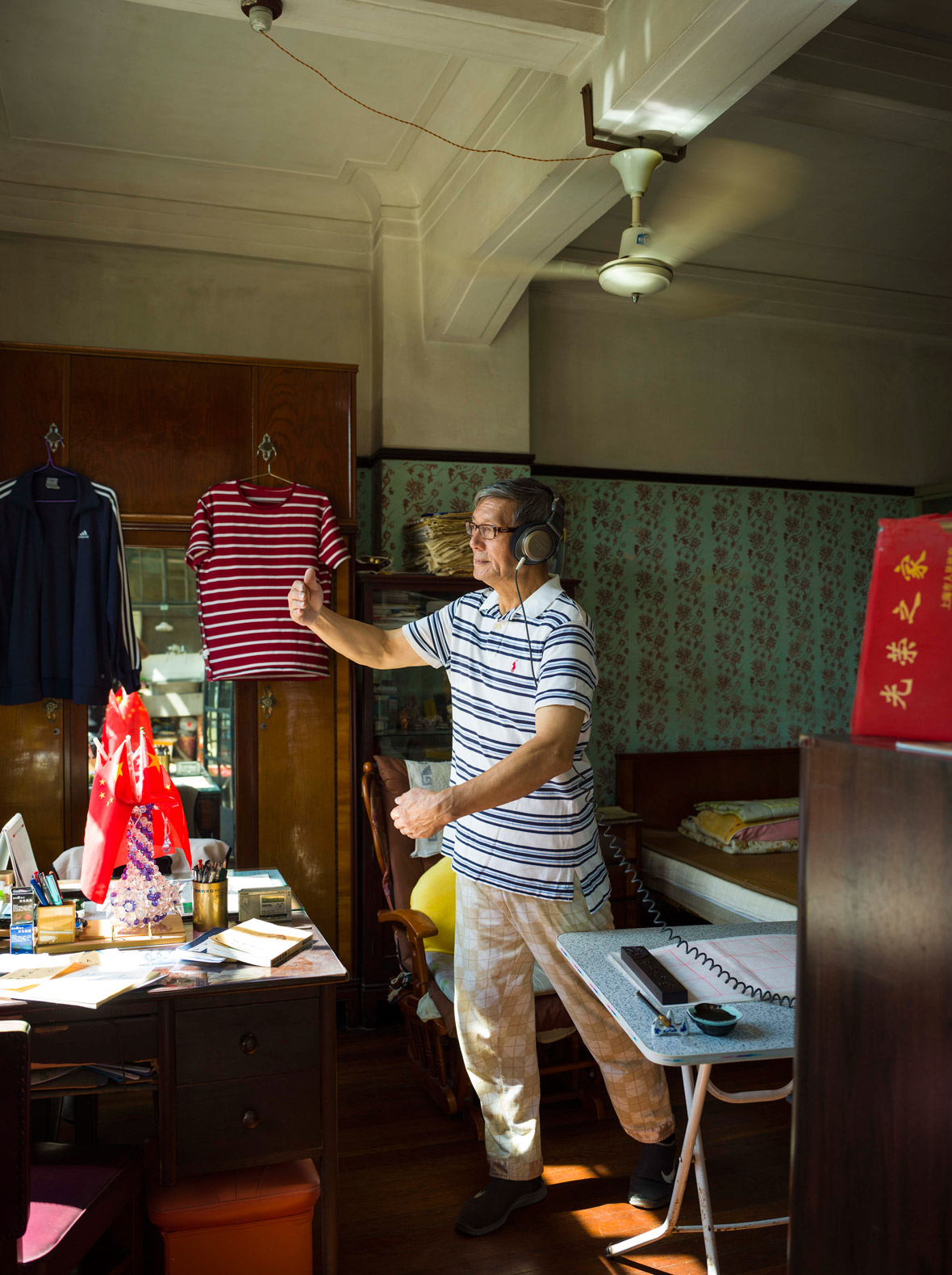
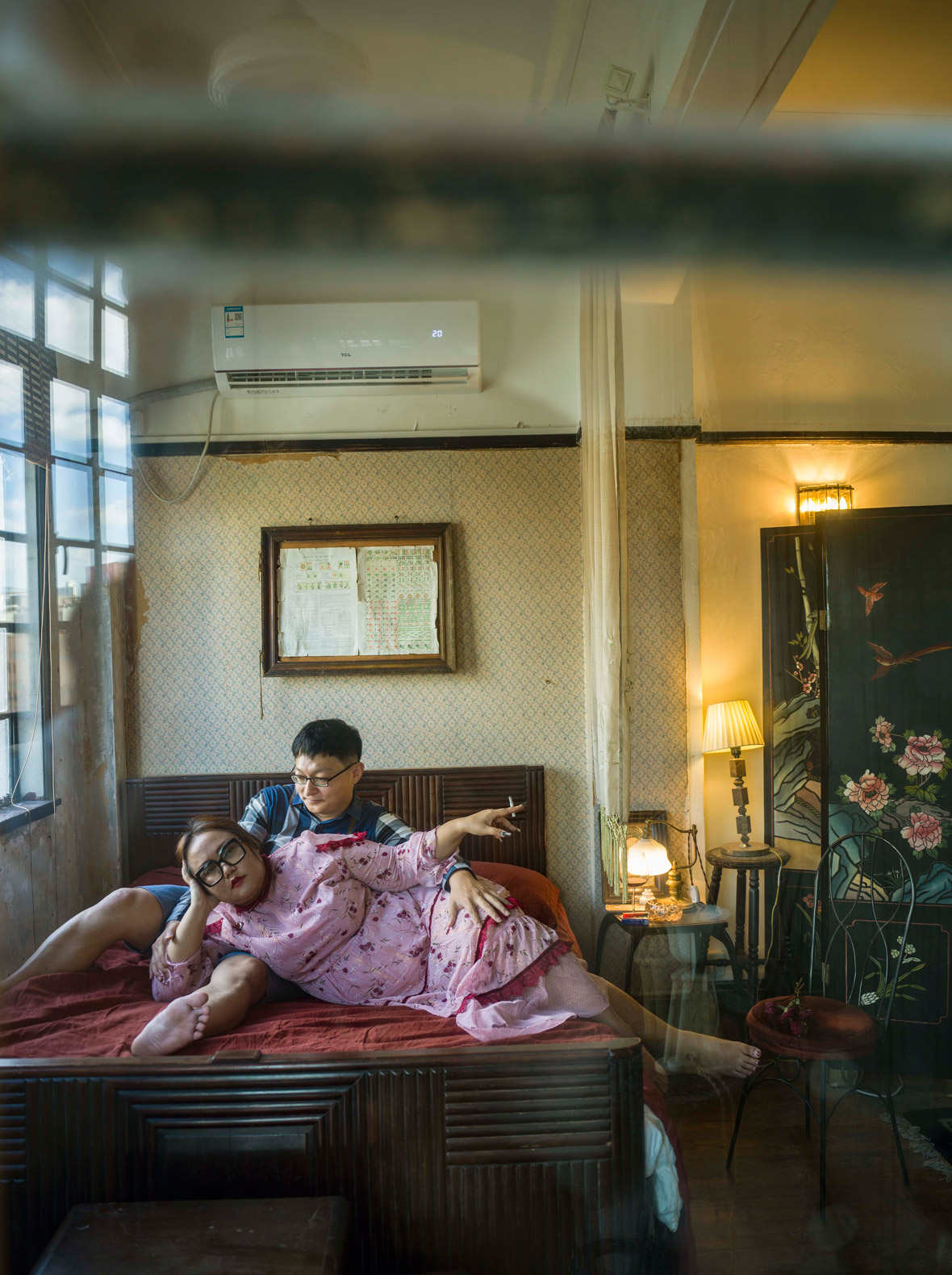
In the past, the buildings’ residents were largely composed of those from the upper echelons of society, but this is no longer the case in modern times. People from all walks of life now reside in the apartment, and with them, the building has taken on an unpretentious charm. “Everyone living in the building is interesting in their own right,” Ye says. “The place feels like society in miniature, being inhabited by people of diverse backgrounds: the kids of live-in nannies who used to work for the affluent families living here, an ex-member of the “southbound cadre,” academic scholars, construction workers, and entrepreneurs from around the world and of all ages. In the elevator, you can encounter people from disparate cultures, of varying nationalities, and of unlikely backgrounds.”
Shortly after moving into the building, Ye was invited to submit works to PHOTOFAIRS Shanghai, an annual photography showcase. This was when the idea for the series was born. “There are countless images of the building and its architectural features,” Ye says. “But for me, people are always the most fascinating part of a place. So I thought I’d approach it from a different angle: to tell the story of the building’s history, I’d take portraits of its current residents.”
和旧时居民相比,显然已没有昔日的阵仗。那些功名事迹仿佛化作大楼里斑驳的纹理,成为现在居民的咀嚼生活的滋味。沿着旋转楼梯一路向上,在锈迹斑驳的信箱与厚重的铁质楼梯脚踢板之间、在镶着方正形玻璃的木质双开门和硬木细条拼花地板上,都散发着浓厚的海派烟火之气,是老上海特别的味道。叶子乐说道:“不像以前,现在河滨大楼住的居民非常有意思的,这里就像一个浓缩的小社会,住着各种各样的人。有最早的保姆二代,南下干部,文化学者,工人阶级,来自各国的老外和年轻的务工人员。你可以看到不同文化,不同肤色和生活背景的人在同一个电梯里出现。”
而就在他搬进滨河大楼的同一年,叶子乐受邀参加一年一度的影像上海艺术博览会(PHOTOFAIRS Shanghai),并由Branding Shanghai 呈现其个展《家·园》城市影像展。他随即产生了拍摄《河滨肖像:一代人就是一个时代》系列的想法。
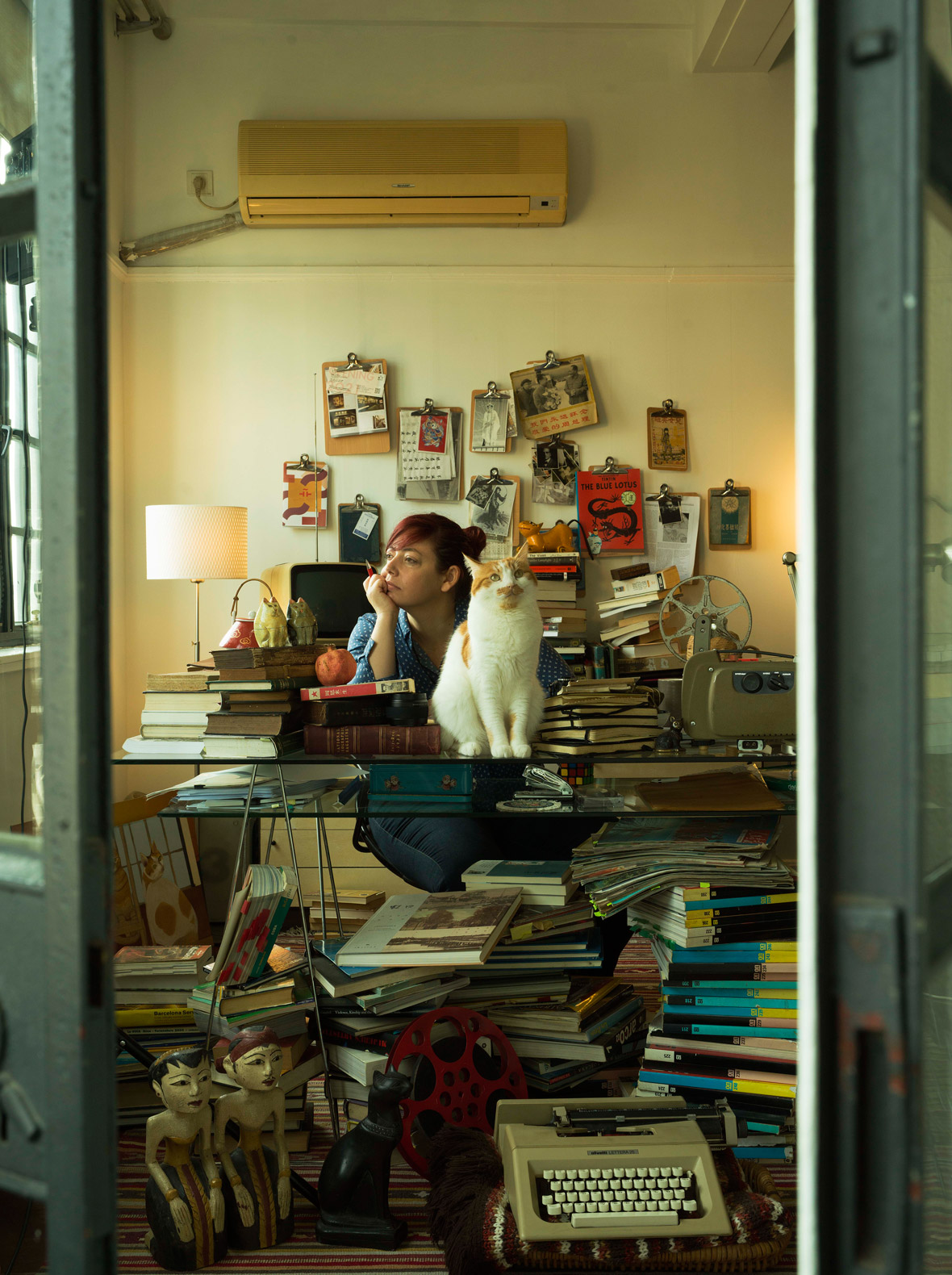
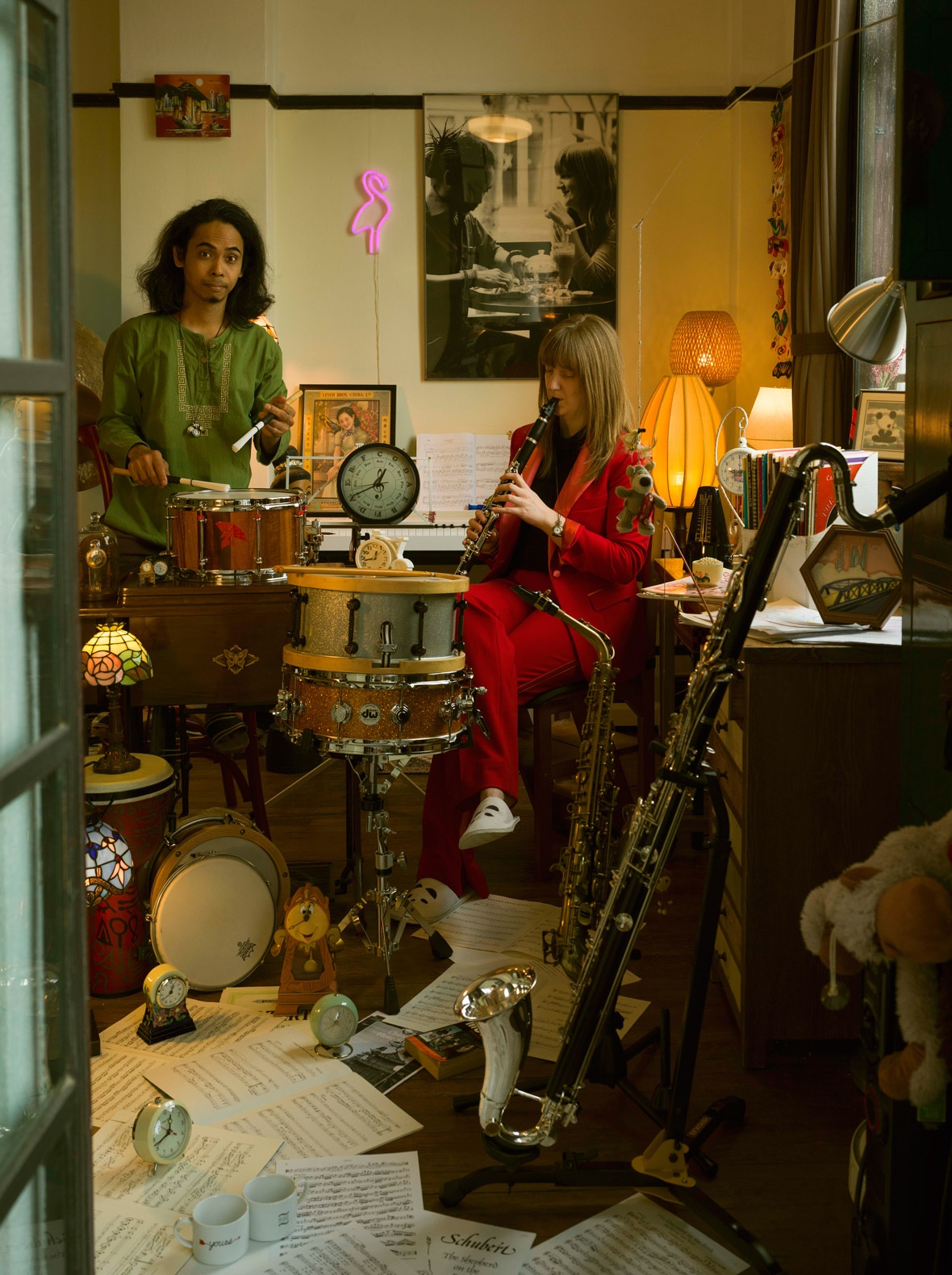
In Ye’s images, viewers are offered an intimate glimpse of the resident’s lifestyles and living spaces. Take, for example, Granny Jiang, who’s lived in the building since the age of five and boasts the title of the building’s longest residing resident. In Ye’s portrait, she’s shown in a crimson-red qipao standing in front of a photo of Mao Zedong. With a wide grin on her face, she fans out a deck of poker cards in her hands.
Then there’s Lucy and Yam, a pair of musicians from the UK and the Philippines respectively. The couple teaches music at an international school in Shanghai and composes music for events around town. They’ve lived in the building for six years. In their portrait, musical sheets, instruments, and framed photos of the two are shown scattered around their living space, giving Ye’s image a certain human warmth.
There’s also Julius, a Hong Kong-born designer who’s found himself stuck in Shanghai since the pandemic. He’s a night owl who enjoys staying up late. Living with him is Milou, an adorable cat who’s more than happy to stay up into the late hours with his owner. In his portrait, Julius painted his face with black paint to match the pattern of his cat’s fur.
Within these singular frames, Ye reveals the occupation, interests, and lifestyles of the building’s diverse inhabitants.
To photograph these people, Ye didn’t just go knocking on doors. Navigating bureaucratic hoops, he worked with the neighborhood committee and district officials to shoot the project. The series consists of 15 portraits, all of which were shot in a span of three weeks. “I talked at length with everyone I photographed,” he says. “The oldest person was born in the ’30s and the youngest was born in the ’80s. I did my best to learn their actual stories and learn about the objects significant to them in their homes. A lot of them asked me to rearrange their homes, and so, I’d stage the scene based on their personal stories. Through the items that have meaning to them and their past experiences, I tried to capture their life in a single frame.”
Ye also worked with writer Chen Zhongwei to complete the series. He met Chen—who was a neighbor—after conceptualizing the project, and the two bonded over their shared interest in the building’s history. Chen is a history major who studied in the U.S., but after coming back to China, he found himself fascinated by Chinese history and the Embankment Building. A few years back, he even penned an article on the building for Chinese media outlet The Paper titled “The Tenants of the Embankment, a Piece of Shanghai History.”
Working with Ye, Chen conducted interviews with the tenants who agreed to be photographed, and together, the writer-and-photographer duo wove together a compelling picture of the building’s history and the experiences of those residing within its walls.
“With each interview, I realized that no one is ordinary,” Ye recalls. “Every story was fascinating. What you observed of each person was hardly scratching the surface, and if you took the time to learn their stories, their lives seemed wondrous.”
在镜头对这栋大楼的记录中,叶子乐选择让人成为主角。他解释道:“为一栋历史保护建筑拍摄‘肖像’的摄影师很多,但其实对我来说,人才是最有趣、最迷人的。所以,我想换个角度,不去拍摄大楼本身,而是通过每一位活生生的住户,将大楼的历史和故事圈连起来,让观者更有代入感,让大楼的故事更鲜活。”
作品所要讲述的故事是直白且丰富的,每个人摆出不同的姿势,结合最具个人代表的精确场景布置,尽力讲好自己的故事。姜奶奶打得一手好牌,她五岁时就住进大楼,见证了日军投降、上海解放,是战争与革命的亲历者,也是最资深的住户。照片中,姜奶奶身上老式衬衫与砖红色背景相得益彰,她手持扑克,脸上露出得意的微笑;Lucy 与男友 Yam 是一对音乐情侣,来自英国的她与来自菲律宾的他在上海邂逅,他们给国际学校学生们教音乐,为上海音乐活动奏曲,如今已在河滨大楼居住六年。只见散落满屋的乐谱和乐器,在暖阳色房间内演奏了起来,墙上挂着他们相爱的画框;香港设计师 Julius 是个工作狂,疫情以来他不能回到香港,只能呆在上海,每天与爱猫 Milou 一道昼伏夜出。画面中,一位涂了黑色眼圈的中年男子伏案在黑夜的烛光旁,与暹罗猫共度时光…….在叶子乐的作品中,观众能通过各种细节,轻松地推断出不同面孔的经历与生活,每一张照片都令人着迷,不禁驻足端详许久。
为了认识不同文化背景、年龄的住户,叶子乐在拍摄前向居委会和居民区干部求助,在短短三周内完成了十五幅肖像作品。他接着说道:“拍摄对象从 30 后到 80 后,我会先去和他们聊天,并尽我所能的去挖掘拍摄者的故事,然后一一细数他们家里物件的来历和意义去挖掘更深层次的内容。大多数拍摄者都会被要求来一个‘搬家式’布景,我会根据他们的故事重新布景,然后通过人与物件的关系尽量在一张照片里去呈现他们的人生。”
和叶子乐一同完成作品的还有他的邻居陈仲伟,两人也是因为《河滨肖像》相识。陈仲伟曾在美国攻读历史专业,回国后便一直研究河滨大楼历史,曾在澎湃新闻上发布了一篇名为《河滨大楼的房客,一块上海近代史拼图》的文章。他的加入,为系列深挖出每个人独具特色的经历,再通过人物采访明确场景布置,协助叶子乐完成拍摄。叶子乐接着说道:“采访中,你会发现没有一个普通人的故事不会让你着迷,肉眼所见的并非真实,只要认真去听,每个人的故事都会很精彩。”

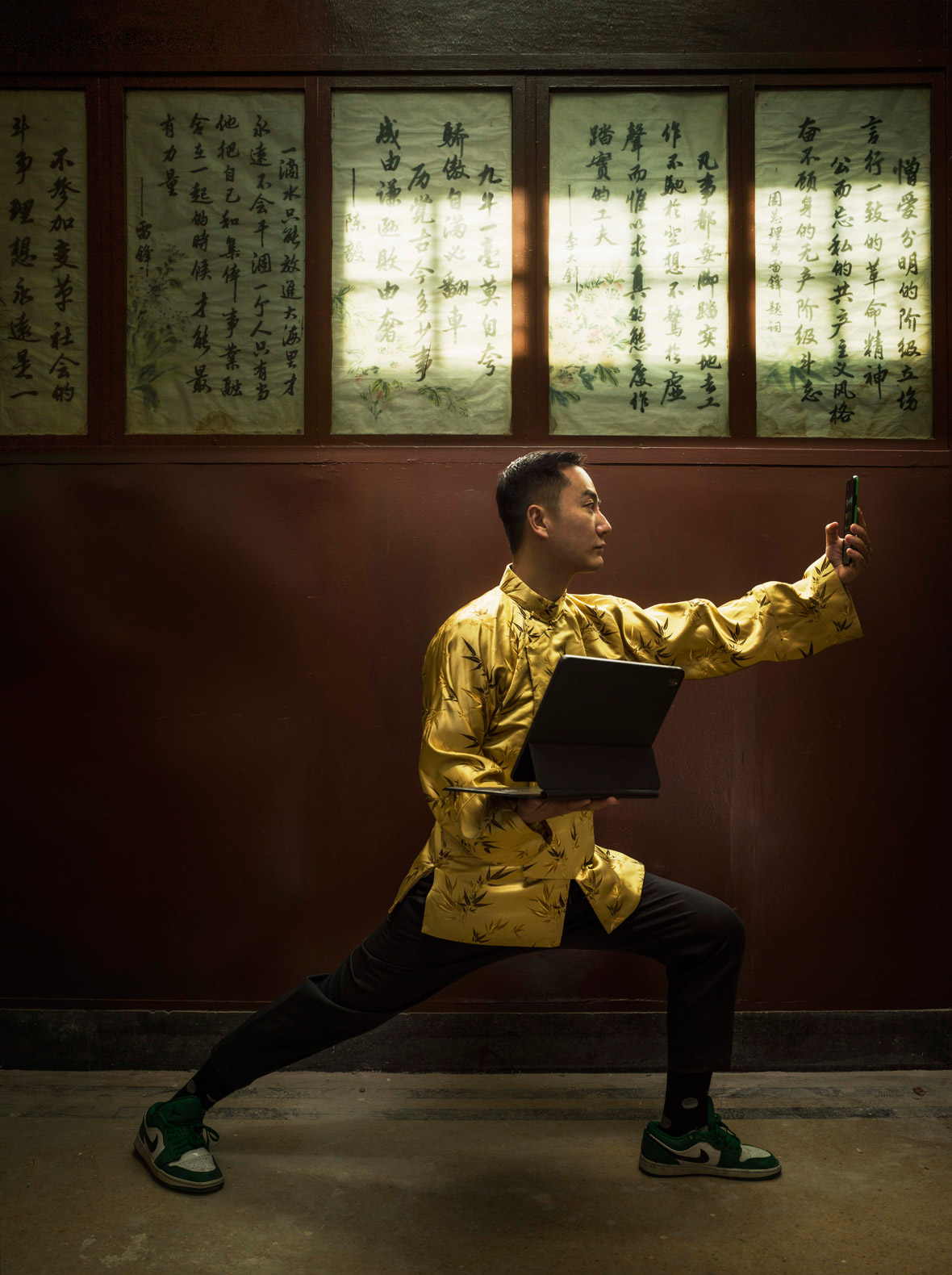
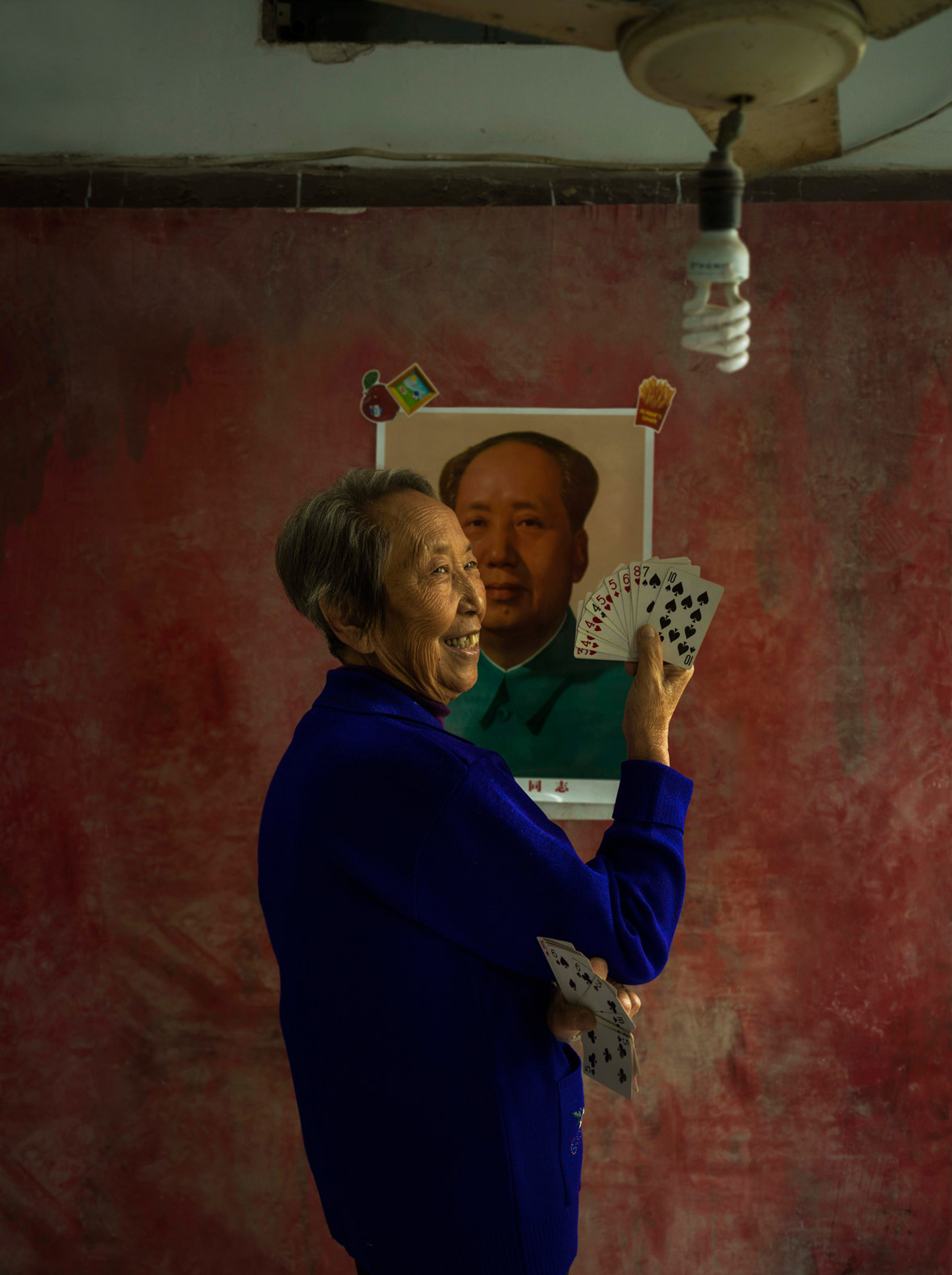
In some ways, the Embankment Building is a microcosm of the current Shanghai zeitgeist. It’s become a place where people around the world co-exist in harmony, learning from one another as they build a home together. “The building, much like the city, is a place that welcomes people of all ethnicities, cultures, and backgrounds; it’s a place that people can be proud to call home,” Ye says. “I see Shanghai as a place of optimism. It’s a place of dreams and aspirations, and my work captures that—every photo is rooted in daily life, but it also transcends that.”
从某种角度来看,河滨大楼映射整座城市的时代脉搏,像是一种纽带,将世界各地、不同身份、年龄的人维系在一起,共同创建一座家园,这样的纽带在历经数年的雕磨后,拉扯出生动的姿彩;而当我们把镜头聚焦在每一位住户身上时,他们又各有各的不凡。叶子乐说道:“上海是一座特别包容和海纳百川的城市,就像河滨大楼的住户一样,这里住着来自不同阶层,文化,背景和肤色的人,但这里和上海一样,都是我们的家。”2021 年末,“上海世纪:上海精神” 作为影像上海艺术博览会(PHOTOFAIRS Shanghai)主题之一,领衔多场展览。对于上海精神的理解,叶子乐说道:“上海精神一直是乐观的,裹挟着遐思和愿望。我的作品就是那一丝遐想 —— 一切来源于生活,但是高于生活。”作为新一代上海人,叶子乐认为自己有责任去讲好上海的故事,在时间的缝隙里,呈现河滨大楼璀璨的戳面。
Like our stories? Follow us on Facebook and Instagram.
Weibo: @叶子乐_KimYe
Contributor: Pete Zhang
Images Courtesy of PHOTOFAIRS Shanghai
Image Captions Courtesy of Chen Zhongwei

